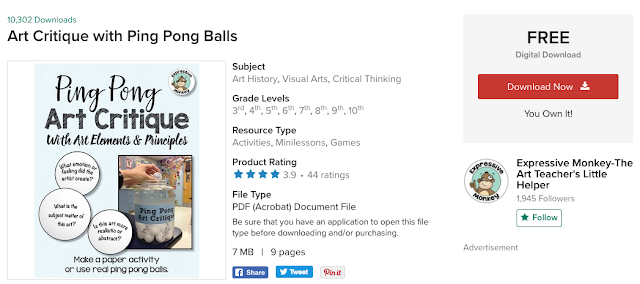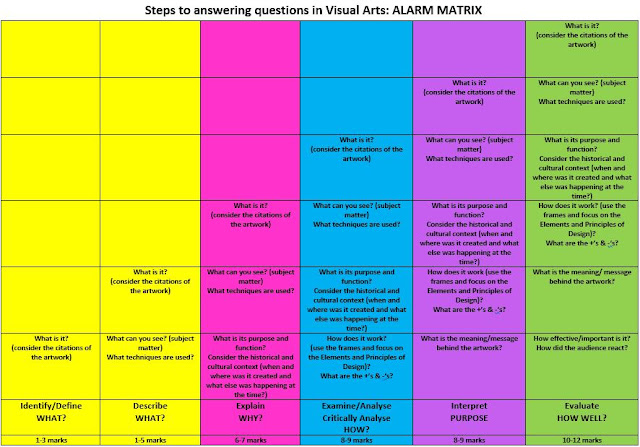Make Art theory fun!
I've been thinking of ways to make theory more fun AND to encourage class participation when it comes to discussion time. I don't want the same students to be giving me the answers. I want the whole class to contribute.
What works:
I downloaded the free PDF file from 'Expressive Monkey' on Teachers Pay Teachers. The resource is called 'Ping Pong Art Critique'. It provides a list of 32 questions to help facilitate class discussions on ANY piece of artwork.
For example:
-What title would you give this art?
-What feeling or emotion did the artist create?
-Where did the artist create contrast?
-Does this art tell a story?
-What would you change about this art?
-Would you display this art in your house? Why? Why not?
You can either purchase real ping pong balls and write the questions on top or simply print and laminate the resources. I decided to save money and go with the second option.
I passed out one ping pong ball per student (there is more than enough for one full class). I then showed the class one 'unseen' artwork. I randomly asked students for their answer. Students had to be ready and be 'alert'. I asked each student to read out their question first (on the ping pong ball) then give their answer. I encouraged students to expand on their answers and to provide 'evidence'. I also allowed other students to join into the conversation. It was great to see the whole class involved.
Students enjoyed the lesson as it was set out like a game. The learning naturally took place.
Link to the free resource:
I have also been trying to teach students the four frames. I want them to be familiar to the jargons used in Art as well as understand how they can influence the artworks that they create. I gave students two random white cards at the start of the lesson and asked them to fit it under the correct frame. We then went over each one as a class and moved the 'wrong' ones back to the right place.







Comments
Post a Comment